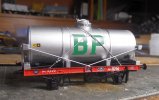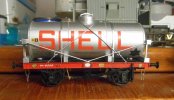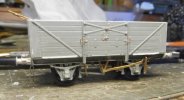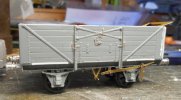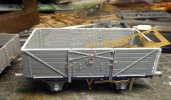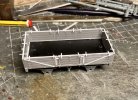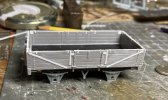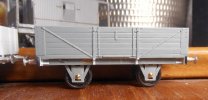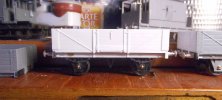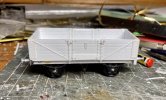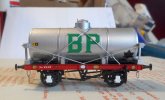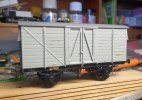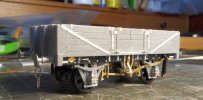AJC
Western Thunderer
Finished one of the two. This is the insulated William Butler tank and it's quite eccentric, in some ways, with features of 'normal' cylindrical tanks, including a pressure relief valve, steam inlets and, catwalks. The latter are presumably a function of the cladding and, as modelled are a bit speculative but add an interesting visual contrast to the earlier T.4 (and the Slater's kit). It's quite chunky - about the size of the SR 8 plank in the background.

On the ends you have the steam lance inlets but not a whole lot more, a bit fiddly to do from wire and tube but they're a good solid representation.

Side on the most significant details on this rather slab-sided thing are on the solebar and below. The ownership plates are a bit crude, but there's no way I was going to get a set custom-etched: they're just 5 thou' strips on a backing sheet of 15 thou' with some fuse wire around the edge.

Not too bad, I think.
Adam
On the ends you have the steam lance inlets but not a whole lot more, a bit fiddly to do from wire and tube but they're a good solid representation.

Side on the most significant details on this rather slab-sided thing are on the solebar and below. The ownership plates are a bit crude, but there's no way I was going to get a set custom-etched: they're just 5 thou' strips on a backing sheet of 15 thou' with some fuse wire around the edge.

Not too bad, I think.
Adam



 St. Mary Cray Junction. 31826 & works train. 14.12.58
St. Mary Cray Junction. 31826 & works train. 14.12.58












